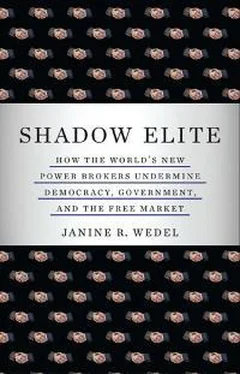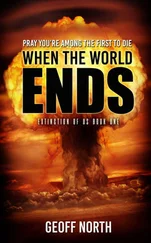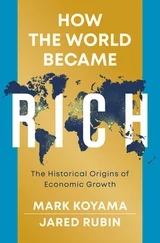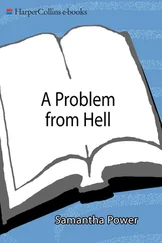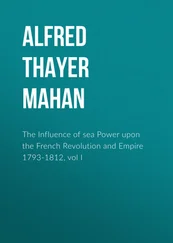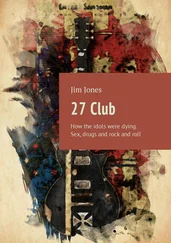47. For information on Reagan’s approval of the sale of missiles to Iran, see Arthur L. Liman, “Hostile Witnesses,” Washington Post magazine, August 16, 1998, http://www.washingtonpost.com/wpsrv/national/longterm/irancontra/contra1.htm.
48. These U.S. laws and policies include Reagan’s professed hardliner approach “Operation Staunch,” which placed economic and political sanctions on Iran (1983); the Boland Amendment I and II (1983 and 1984), passed by Congress and signed into law by President Reagan, which placed limits on U.S. assistance to Central America in the form of weapons; and the Arms Export Control Act of 1976 and rules governing the mandatory reporting to Congress of Department of Defense weapon sales to the CIA, both of which would have severely restricted the Enterprise’s activities (Theodore Draper, “Finding No. 3,” A Very Thin Line , pp. 120–121, 18, 24, and 247–248).
49. North occupied a position—deputy director for political-military affairs—that had been created for him at the NSC in 1984 while he was on temporary detail there. According to North, it was Casey’s idea to set up “outside entities” to aid the Contras, “ostensibly to ‘comply’ with the Boland Amendment by going around it,” as the historian Theodore Draper writes, and it was Casey who suggested bringing Secord on board. Theodore Draper, “Body and Soul,” A Very Thin Line , p. 37. McFarlane, like North, was a Naval Academy graduate and U.S. Marine Corp officer (p. 40). Even before Poindexter took over as NSC Advisor, all NSC staff, except North, were required to send correspondence through an executive secretary. North signed correspondence to Poindexter with the code name “Blank Check” (p. 220).
50. Secord and Hakim met while Secord was stationed on an Air Force mission in Iran, where Hakim made a business selling U.S. electronic equipment to the Iranian Air Force (Draper, “Out of Control,” A Very Thin Line , p. 37).
With regard to Hakim’s meetings with Iranians: Frankfurt, Germany was the scene of two such meetings in February and October of 1986; another meeting took place in Tehran in May 1986 (p. 420).
With regard to Hakim’s reimbursement, the Walsh report states that in 1985 and 1986 Hakim received $2.06 million from the Enterprise ( Final Report of the Independent Counsel for Iran/Contra Matters, Volume I: Investigations and Prosecutions , Lawrence E. Walsh, Independent Counsel, August 4, 1993, Washington, D.C., United States Court of Appeals for the District of Columbia Circuit, Division for the Purpose of Appointing Independent Counsel, Division No. 86–6, Chapter 10, http://www.fas.org/irp/offdocs/walsh/). New York Times , “Iran-Contra Affair: Accounts of Guns, Money and Promises,” June 14, 1987, http://www.nytimes.com/1987/06/14/weekinreview/iran-contra-affair-accounts-of-guns-money-and-promises.html.
51. Leaders of crucial CIA operations included the head of the CIA’s Central American Task Force, a CIA station chief in Costa Rica, and others. Abrams also convinced the Costa Rican government to build an airstrip that would facilitate Contra resupply operations. Former CIA operatives collected generous profits carrying out Contra resupply missions for front companies with names like Southern Air Transport and Corporate Air Services for the CIA (Draper, “Body and Soul,” A Very Thin Line , p. 39).
Representatives of the CIA, the NSC, the departments of Defense and State, and the Joint Chiefs of Staff participated in the high-level interagency working group known as the Restricted Inter-Agency Group (RIG). For information about Abrams’s role in raising private funds for the Contras, see Scott Armstrong, “Cast of Characters,” in Malcolm Byrne, ed., The Chronology: The Documented Day-to-Day Account of the Secret Military Assistance to Iran and the Contras (New York: Warner Books, 1987), p. xi.
With regard to Abram’s private fund raising, see Draper, “Big Money,” A Very Thin Line , p. 62.
52. Ledeen served as a special adviser to Secretary of State Alexander M. Haig Jr. (from 1981 to 1982) and a consultant to the Pentagon in 1983.
With regard to Ledeen’s briefing of McFarlane, see Charles R. Babcock, “Key Iran-Contra Figure Ledeen Might Not Testify; Scheduled Hill Appearance by Former NSC Consultant on Terrorism Postponed,” Washington Post , July 5, 1987.
With respect to Ledeen’s working with North on counterterrorism, see Scott Armstrong, Secret Military Assistance to Iran and the Contras: A Chronology of Events and Individuals , Scott Armstrong, Malcolm Byrne, and Tom Blanton, authors, The National Security Archive, 1987, p. xviii.
With regard to Ledeen’s relations with foreign nations, see, for instance: http://www.nytimes.com/1987/02/01/world/adding-peices-to-the-puzzle-a-new-chronology-of-the-iran-contra-affair.html.
With regard to the Walsh quotes: The first one is found in Lawrence E. Walsh, “Opening View,” Firewall: The Iran-Contra Conspiracy and Cover-Up (New York: W. W. Norton & Company, 1997), p. 37. Discussion between Ledeen and Peres is reported in Draper, “Big Money,” A Very Thin Line , p. 139. The second Walsh quote is found in Walsh Report, Chapter 1.
Khashoggi, who had handled billions of dollars worth of sales in arms and aircraft for the Saudi royal family in the 1970s, has been called the “Modern Multinational Man—placeless and rootless” (Draper, “Middlemen,” A Very Thin Line , p. 123). In Iran-Contra Khashoggi served as a bridge financier, putting down funds on behalf of the Iranian side contingent on repayment by arms dealers upon completion of sale. Despite being considered highly unreliable by the American intelligence community (p. 127), Ghorbanifar served as the U.S. link to moderate Iranian government insiders (by continually convincing Ledeen and North that he would bring relevant Iranians to the table; whether the people he brought were legitimately moderate and/or influential has not been established).
Walsh’s commentary on Ledeen’s secrecy vis-à-vis North is reported in Draper, “Catalysts,” A Very Thin Line , p. 137. With regard to Ledeen’s potential making of money from weapons sales, see, for instance, Oliver North’s note to John Poindexter; Iran-Contra Affair, Item IC02202; Digital National Security Archives; January 24, 1986. In this note, “Oliver L. North informs John M. Poindexter of his suspicion that Michael A. Ledeen may be making profits with [Adolph (“Al”) Schwimmer; Manucher Ghorbanifar] on current operations.” Walsh quote is from Walsh, “Opening View,” Firewall , pp. 42–43.
53. Keith Schneider, “Washington Talk: Contra Drug Inquiry Stirs Growing Interest,” February 24, 1987, in the New York Times , and author’s interview with Jack Blum, November 2, 2004.
54. In addition to a congressional investigation, separate trials for some of the protagonists of the tale ensued. Before being pardoned, North was convicted on three felony counts; Abrams pled guilty to two misdemeanor charges of withholding information from Congress; and Ledeen was not charged. See, for example, Federation of American Scientists, “Walsh Iran / Contra Report – Summary of Prosecutions,” http://www.fas.org/irp/offdocs/walsh/summpros.htm. With regard to the pardons, see: “Bush Pardons 6 in Iran Affair, Aborting a Weinberger Trial; Prosecutor Assails ‘Cover-Up’” New York Times , December 25, 1992, http://www.nytimes.com/books/97/06/29/reviews/iran-pardon.html.
55. The first two post–Cold War commanders-in-chief, presidents Bush (the elder) and Clinton, were unenthusiastic about missile defense. (Clinton’s defense secretary, Les Aspin, even proposed cutting the ground-based portion of it.) See, for instance, New York Times , “Reagan’s Missile Shield in Space, ‘Star Wars,’ Is Pronounced Dead,” May 14, 1993.
Читать дальше
